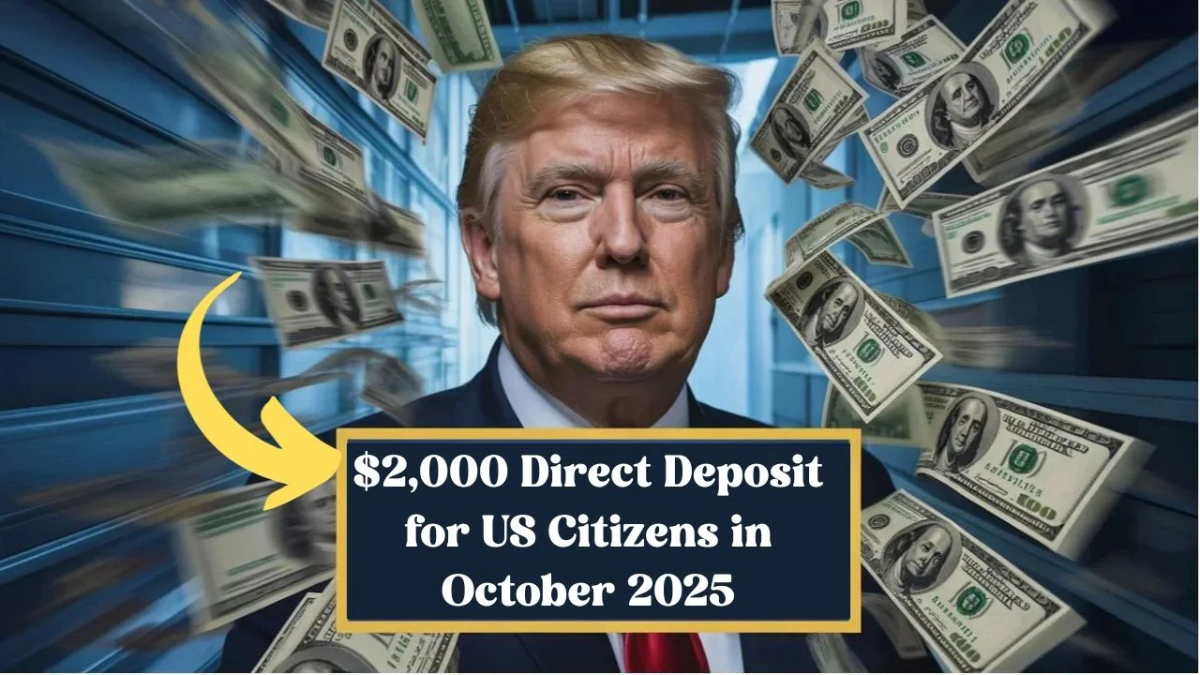$2,000 Direct Deposit :As October 2025 approaches, social media platforms, online news outlets, and community groups are buzzing with one big question—“Is the IRS really sending out $2,000 direct payments this month?” For millions of Americans, the idea of additional financial relief brings both hope and confusion. After years of economic challenges, any hint of a new stimulus package immediately attracts attention. But what is the truth behind these claims? Let’s understand it in simple, human terms.
$2,000 Direct Deposit for U.S. Citizens in October? Check the Latest on Stimulus Checks
Truth: No official $2,000 stimulus payment has been confirmed yet.
Let’s start with the facts. Until mid-October 2025, the IRS has not officially confirmed any new $2,000 stimulus payments or federal direct deposit programs. Many headlines about “$2,000 checks coming this month” are based on speculation or false proposals being discussed in Congress—not final programs.
However, discussions are ongoing in Washington about potential financial relief for working Americans and seniors struggling with rising living costs. Although nothing has yet officially become law, the American Worker Rebate Act has been one such proposal, suggesting payments ranging from $600 to $2,400 for eligible taxpayers.
However, no funds will actually be sent until this bill passes both houses of Congress and receives presidential approval.
Why Rumors Are Spreading
So many people are hearing about $2,000 direct deposits because:
- People are still struggling financially. High grocery bills, rising rents, and medical expenses make the idea of another stimulus check appealing.
- Proposed relief bills exist. Some lawmakers have mentioned financial assistance packages for middle-class and low-income families.
- Past experiences with stimulus payments. Memories of receiving checks in 2020, 2021, and 2022 lead Americans to believe that another round may be possible.
While these factors make this rumor credible, the IRS itself has warned citizens to be wary of misinformation—especially on social media or from websites that promise “quick access” to payments.
What You Should Do Now
Although the $2,000 direct deposit for October hasn’t been confirmed yet, you can take some practical steps to stay prepared and safe:
- Check the IRS website (irs.gov) regularly. Any new stimulus or rebate will always be officially announced there first.
- Make sure your 2024 tax return is filed. Previously, most stimulus checks were distributed based on your tax filing status and income.
- Keep your direct deposit information updated. This ensures faster payments when new relief is approved.
- Beware of scams. The IRS will never text, email, or call you asking for bank details to “issue” your $2,000 payment.
Keep an eye on legislative progress. Keep an eye on bills like the American Worker Rebate Act – if approved, it could pave the way for actual payments.
Potential Eligibility (If Approved)
If a $2,000 direct deposit becomes possible, the same eligibility criteria as previous stimulus checks are likely to apply:
- Single filers with incomes up to approximately $75,000 may be eligible.
- Married couples filing jointly with incomes up to $150,000 may be eligible.
- Family heads with dependents may receive additional benefits.
- Depending on the final legislation, senior citizens and Social Security beneficiaries may also be included.
Remember – these figures are based on previous stimulus programs and current legislative proposals, not any official IRS regulations.
When could payments arrive?
If a new relief bill is passed in the coming weeks, the IRS typically begins processing payments within two to four weeks of approval. Direct deposits will be sent first, followed by paper checks for those whose banking information is not on file.
But as of now, there is no confirmed payment schedule for October 2025.
Caution
Fraudsters are already exploiting the confusion surrounding the rumored $2,000 payment. If you receive a text, email, or social media message that says, “Get your IRS $2,000 deposit now,” delete it immediately. Always rely on official government websites for updates.
Why Americans are still hoping for relief
The economic challenges facing many families are real. Even a one-time deposit of $2,000 could help pay for outstanding bills, rent, or groceries. For senior citizens and low-income workers, such payments are more than just financial relief—they provide peace of mind. This is why many people are watching and hoping for positive news.
But patience and caution are essential. Until the IRS or Treasury officially announce a program, treat any viral posts or unofficial reports as unverified.
Frequently Asked Questions
Q 1: Has the IRS confirmed a $2,000 direct deposit for October 2025?
No, the IRS has not yet confirmed or announced any official $2,000 payments.
Q 2: If such a program is approved, who could be eligible?
Eligibility would likely depend on income, filing status, and citizenship—much like previous stimulus checks.
Q 3: If approved, when could payments begin?
Typically within 2-4 weeks of becoming law.
Q 4: Will Social Security beneficiaries receive it automatically?
If the payment program is similar to previous programs, then yes—benefit recipients can receive it automatically via direct deposit.
Q 5: How can I stay updated safely?
Visit www.irs.gov or follow official Treasury announcements. Avoid third-party sites that ask for personal or financial information.
Final Thoughts
The discussion about a $2,000 IRS direct deposit in October 2025 demonstrates how deeply Americans desire financial relief during these uncertain times. While there’s no confirmed stimulus yet, it’s wise to seek information from reliable sources. Hope is powerful—but information is security. Be vigilant, be prepared, and rely only on official updates from the IRS.

